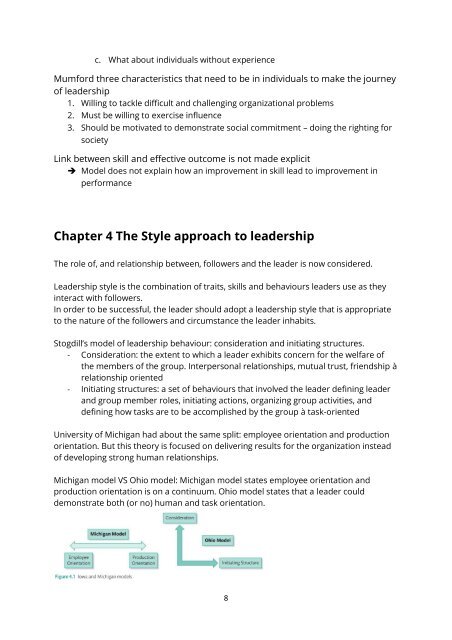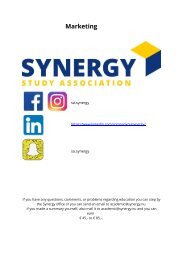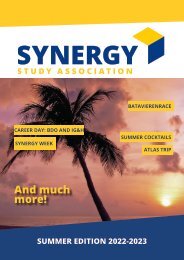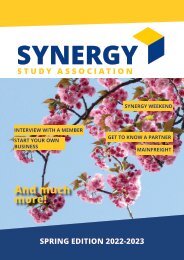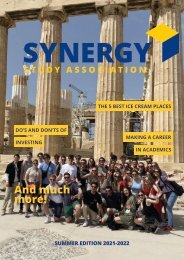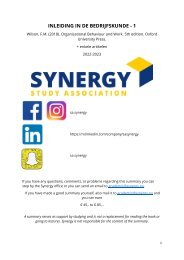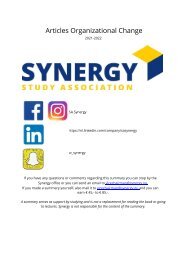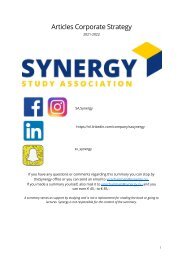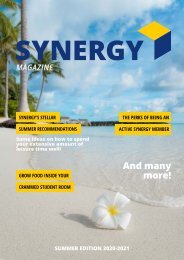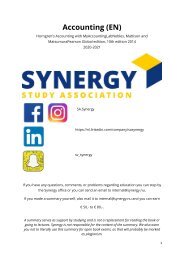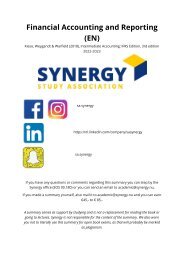Leadership in Organizations
You also want an ePaper? Increase the reach of your titles
YUMPU automatically turns print PDFs into web optimized ePapers that Google loves.
c. What about <strong>in</strong>dividuals without experience<br />
Mumford three characteristics that need to be <strong>in</strong> <strong>in</strong>dividuals to make the journey<br />
of leadership<br />
1. Will<strong>in</strong>g to tackle difficult and challeng<strong>in</strong>g organizational problems<br />
2. Must be will<strong>in</strong>g to exercise <strong>in</strong>fluence<br />
3. Should be motivated to demonstrate social commitment – do<strong>in</strong>g the right<strong>in</strong>g for<br />
society<br />
L<strong>in</strong>k between skill and effective outcome is not made explicit<br />
➔ Model does not expla<strong>in</strong> how an improvement <strong>in</strong> skill lead to improvement <strong>in</strong><br />
performance<br />
Chapter 4 The Style approach to leadership<br />
The role of, and relationship between, followers and the leader is now considered.<br />
<strong>Leadership</strong> style is the comb<strong>in</strong>ation of traits, skills and behaviours leaders use as they<br />
<strong>in</strong>teract with followers.<br />
In order to be successful, the leader should adopt a leadership style that is appropriate<br />
to the nature of the followers and circumstance the leader <strong>in</strong>habits.<br />
Stogdill’s model of leadership behaviour: consideration and <strong>in</strong>itiat<strong>in</strong>g structures.<br />
- Consideration: the extent to which a leader exhibits concern for the welfare of<br />
the members of the group. Interpersonal relationships, mutual trust, friendship à<br />
relationship oriented<br />
- Initiat<strong>in</strong>g structures: a set of behaviours that <strong>in</strong>volved the leader def<strong>in</strong><strong>in</strong>g leader<br />
and group member roles, <strong>in</strong>itiat<strong>in</strong>g actions, organiz<strong>in</strong>g group activities, and<br />
def<strong>in</strong><strong>in</strong>g how tasks are to be accomplished by the group à task-oriented<br />
University of Michigan had about the same split: employee orientation and production<br />
orientation. But this theory is focused on deliver<strong>in</strong>g results for the organization <strong>in</strong>stead<br />
of develop<strong>in</strong>g strong human relationships.<br />
Michigan model VS Ohio model: Michigan model states employee orientation and<br />
production orientation is on a cont<strong>in</strong>uum. Ohio model states that a leader could<br />
demonstrate both (or no) human and task orientation.<br />
8


